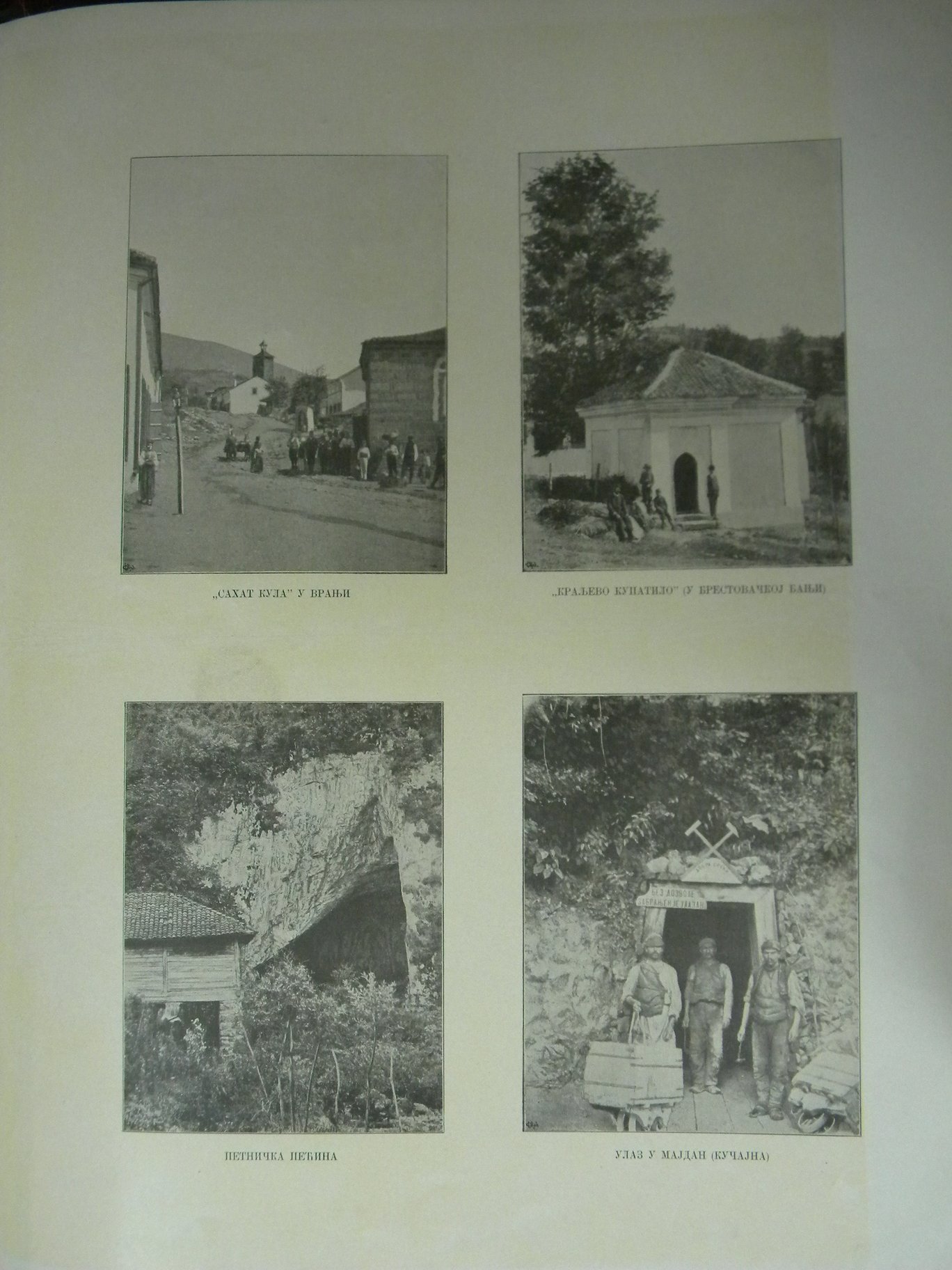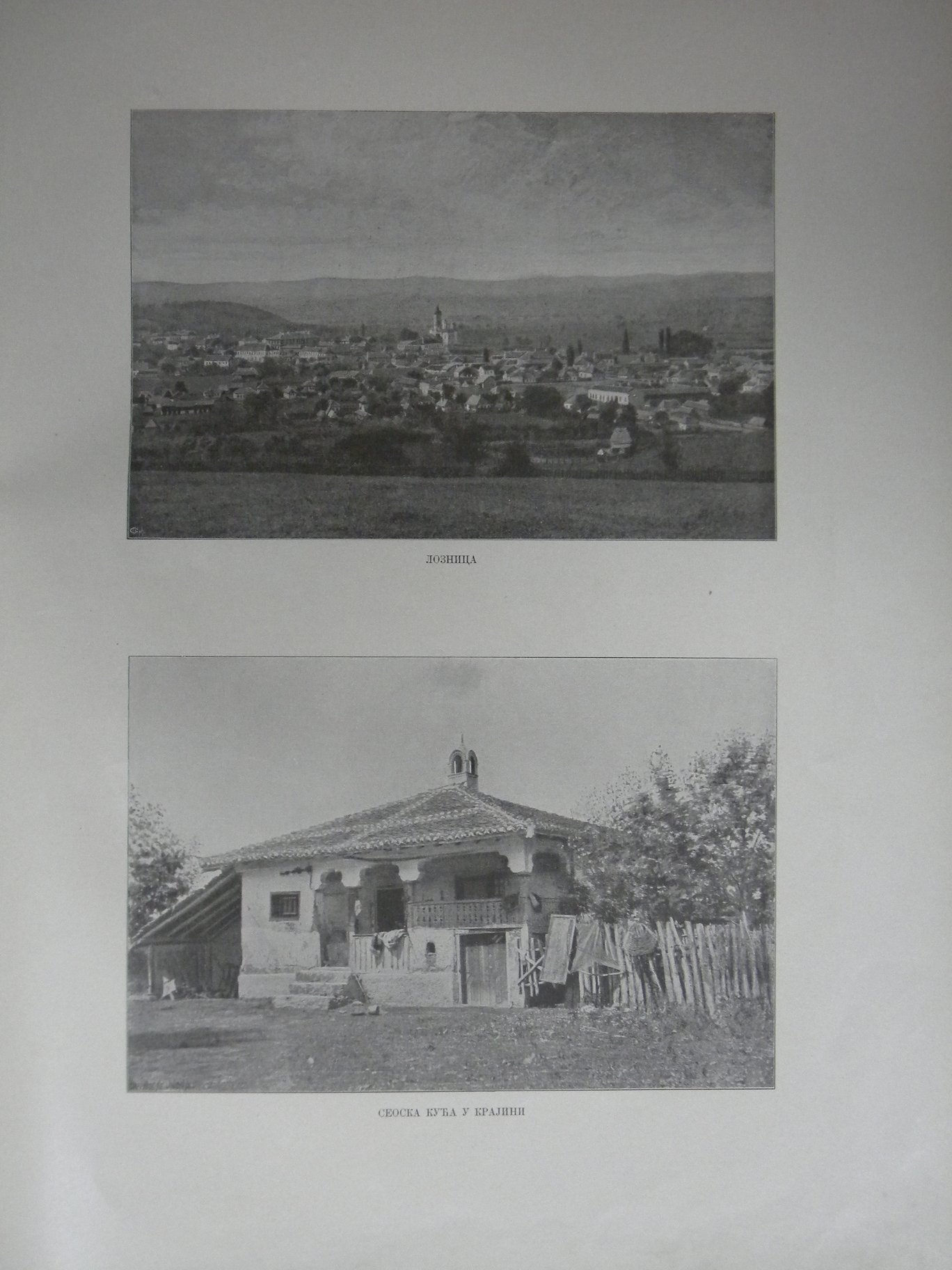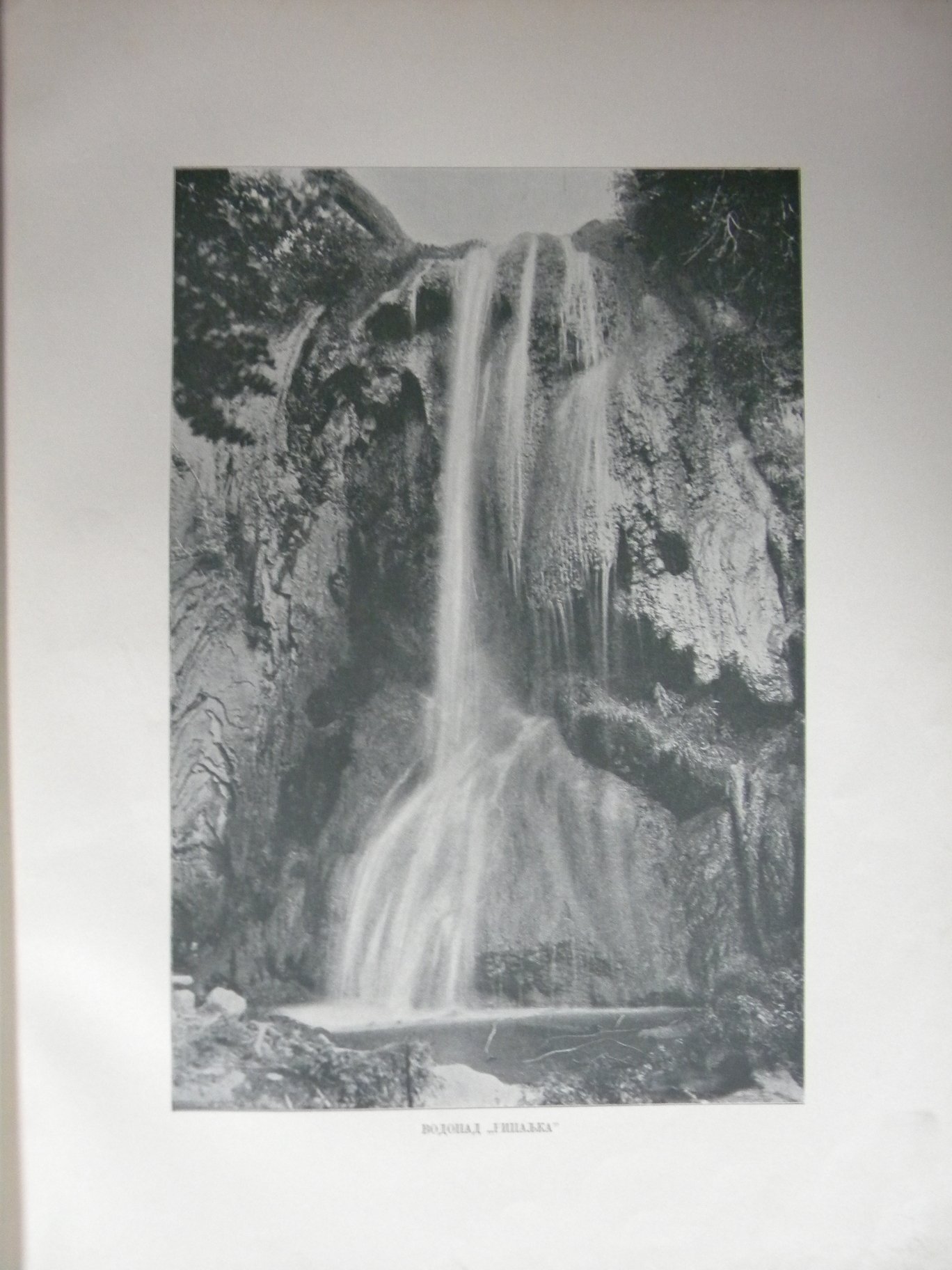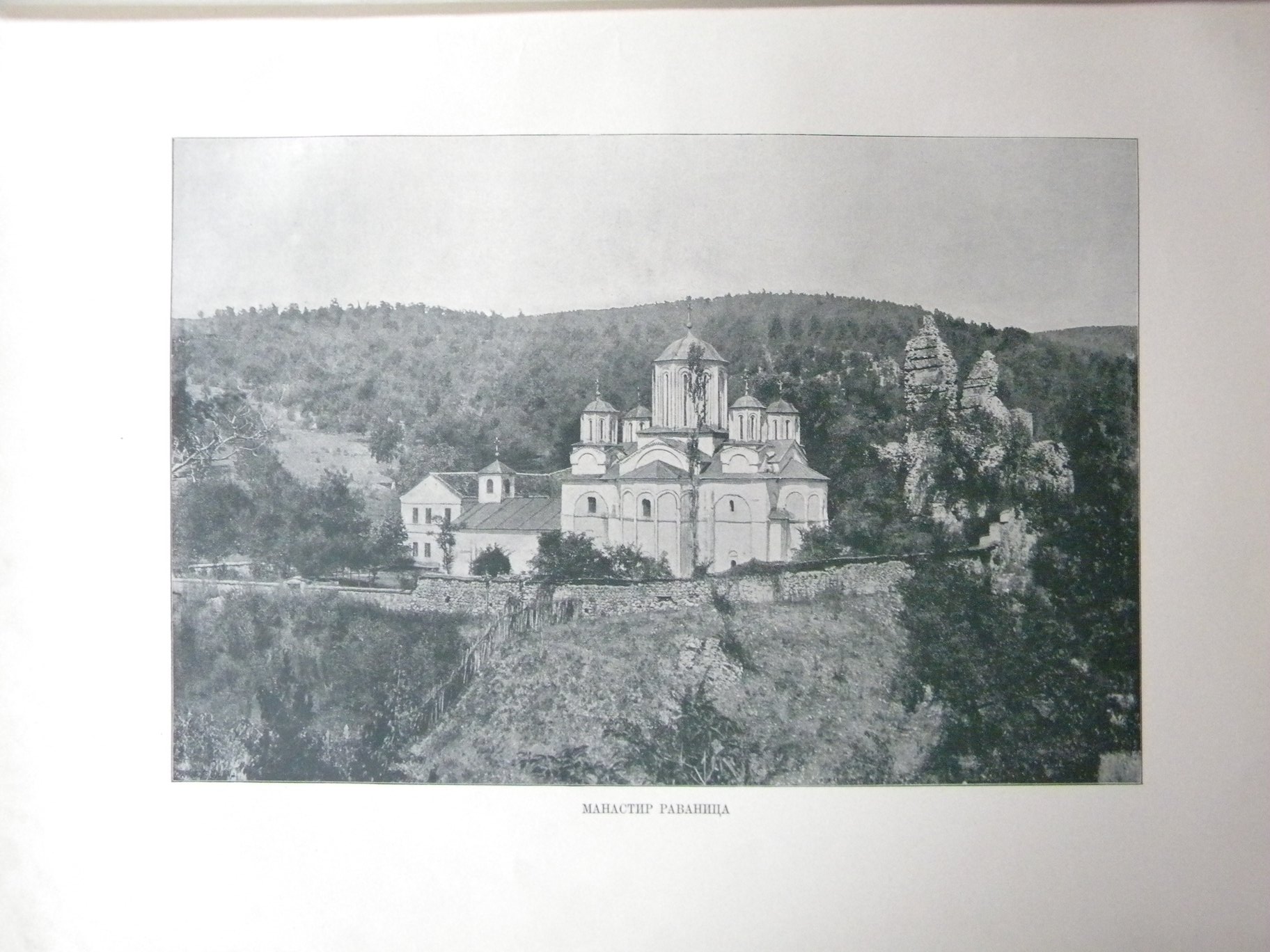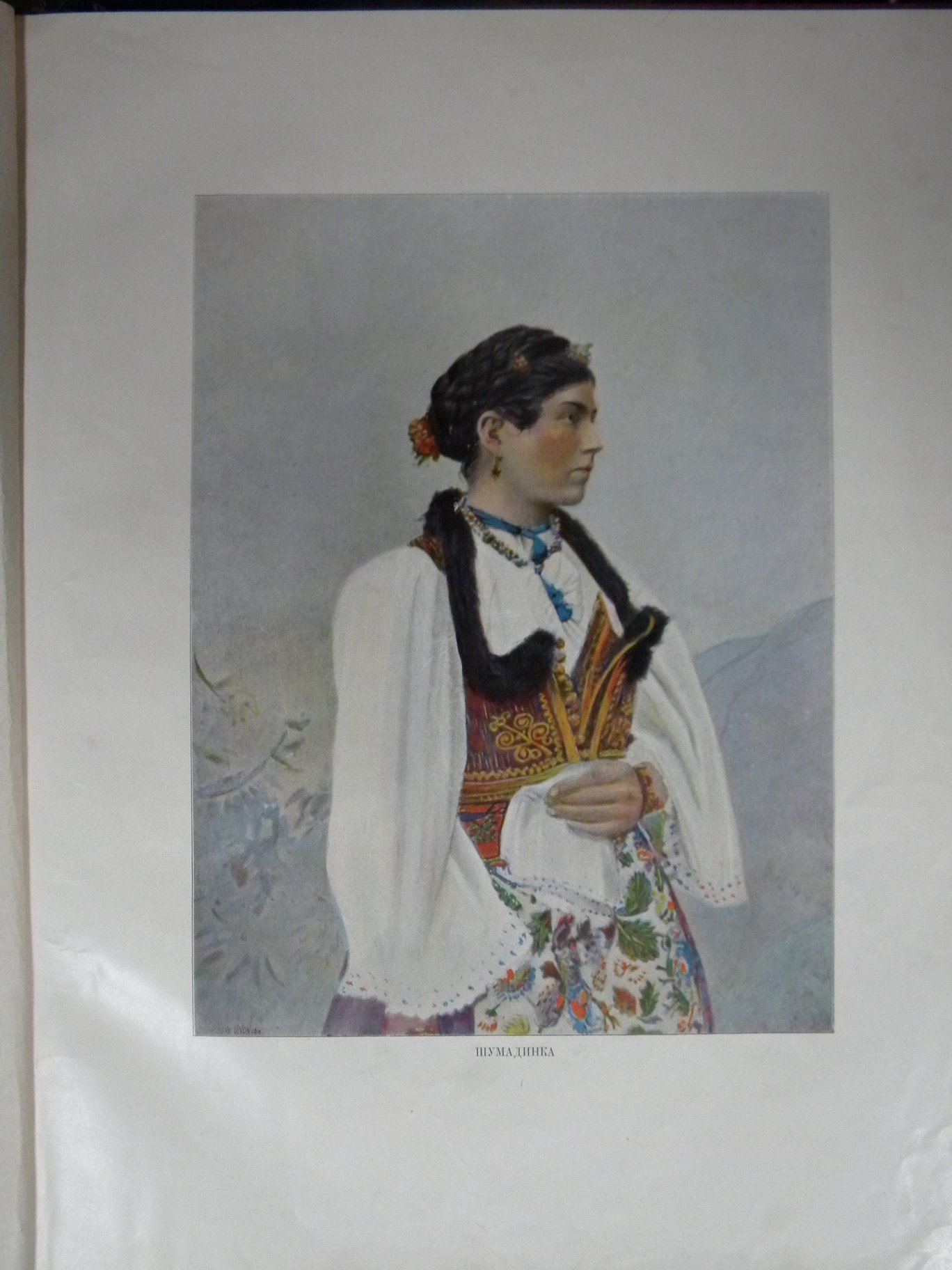Djordje Stanojevic
Photography
February, 15th 2014.
Divna Milosevic
Djordje Stanojevic achieved a lot in the field of photography. He introduced photography into Serbian science. He was the first person from this region to have photographed total solar eclipse. He made contributed immensely to the history of landscape photography. He was a rare artist of documentary photography and he created the first colour photograph in Serbia. He experimented with the first X-ray generator in Serbia.
Professor Djordje M. Stanojevic earned multiple merits in the field of photography. He introduced photography into Serbian science. He was the first person from this region to have photographed total solar eclipse. He made contributed immensely to the history of landscape photography. He was a rare artist of documentary photography and he created the first colour photograph in Serbia. He experimented with the first X-ray generator in Serbia.
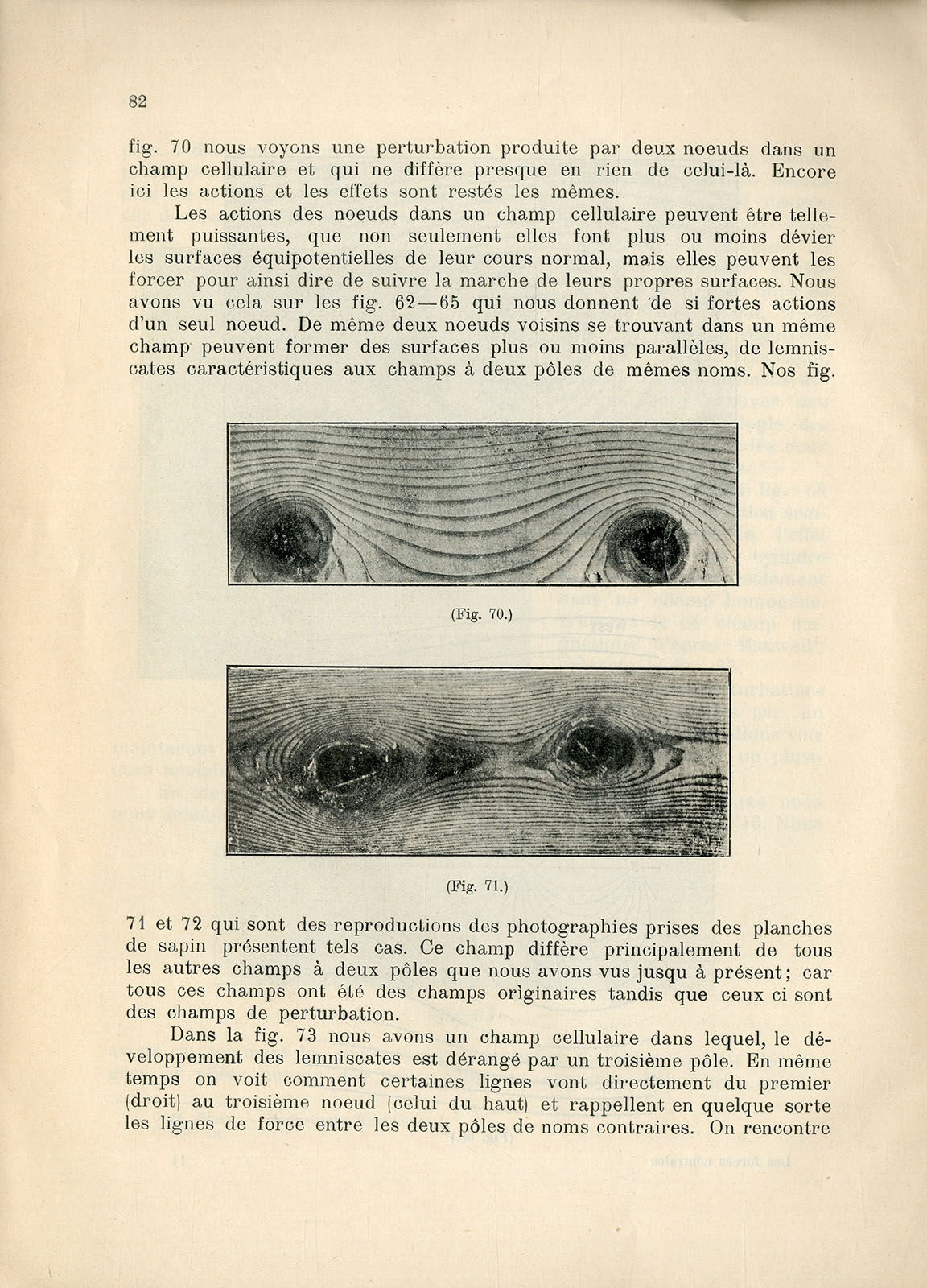
Djordje Stanojevic’s contribution to the science of photography is unquestionable. In one of his letters to Nikola Tesla, he wrote: “In the attached photographs one can see exceptionally beautiful reproductions of magnetic field lines of force and the equipotential surfaces at some plants’ intersections.” These photographs were later published in Central Forces in Nature as an ideal example of scientific research. The roots of his interest for photography as a unique medium of description which serve to introduce the public to the unfamiliar and unknown are probably there, in his work, as it is the case with every humanist of a kind who is led by the idea that the goal of research is met only when it is applied in practice.
Djordje Stanojevic entered the field of history of photography as one of the first authors from this region who managed to photograph the total solar eclipse. After graduating from the University of Berlin as a Military Ministry scholar, Stanojevic worked with Jules Janssen, a renowned astrophysicist who was famous for being one of the few scientists of that period who used photography in direct scientific research. As Stanojevic studied astrophysics, solar physics in particular, Jules Janssen recommended him to the Serbian government for a journey to Russia to observe the total solar eclipse on August 19th 1887. When he returned, Djordje Stojanovic published a report about this phenomenon in the journal of the French Academy of Sciences. Janssen invited Stanojevic to join him on the expedition to Algerian oasis Biskra where he intended to explore the solar spectrum near the horizon so as to examine the influence of the atmosphere of the Earth.
Although he used photography for scientific purposes, Djordje Stanojevic perceived it as a certain kind of art. Thanks to photography he travelled around Serbia, he took photos of landscapes, traditional wear, houses, small towns, churches and monasteries. While searching for suitable watercourses for hydroelectric power plants and while travelling with Belgrade Choir, he photographed different landscapes. He used this material to publish the first Serbian photomonography called Serbia in Pictures: 1 in 1902. The foreword was written by Bogdan Popovic while Ljubomir Jovanovic Patak wrote historical reviews for every picture.
The photomonography is a unique album of the natural beauties of Serbia. The format is 30 x 40cm, hardcover and it contains 16 photographs:
- 1.A Woman from Sumadija (colour) | Šumadinka
- 2.Gornjacka Gorge (colour) | Gornjačka klisura
- 3.Ravanica Monastery | Manastir Ravanica
- 4.Ripaljka Waterfall | Vodopad Ripaljka
- 5.Brestovacka Spa | Brestovačka banja
- 6.The City of Uzice | Užički grad
- 7.Lunchtime in a Village School (colour) | Ručak u seoskoj školi
- 8.Evening in the Periphery of Nis (colour) | Veče u okolini Niša
- 9.A Man from Pirot | Piroćanin
- 10.A Village Church in Eastern Serbia | Seoska crkva u istočnoj Srbiji
- 11.Loznica | Loznica
- 12.A Village House on the Borderland | Seoska kuća u krajini
- 13.The Clock-tower in Vranje | Sahat-kula u Vranju
- 14.King’s Bathroom (in Brestovacka Spa) | Kraljevo kupatilo (u Brestov. banji)
- 15.Petnica Cave | Petnička pećina
- 16.Gateway to Majdan | Ulaz u Majdan (Kučajna)
The publication of the album Serbia in Pictures [1] was announced in Nova Iskra, an illustrated newspaper as early as 1900. It was written that there would be several books and three different editions: luxurious (12 dinars), elegant (6 dinars) and regular (3 dinars).

In addition to the great artistic value, this album was also used later as a historical document which enabled restoration of some monasteries.
In the Balkan States Exhibition which was held in London in 1907, which is said to be one of the most representative exhibitions in which Serbia was presented, there were 99 transparent photo plates which belonged to Djordje Stanojevic. The things in question are glass diapositives (50 x 40 cm) with pictures of the landscapes and cities, interior of Serbian houses, traditional wear, churches etc.

In addition to that, Stojanovic’s album Le bombardement de l'Université de Belgrade, which was published in 1915 and later presented in Paris and London at exhibitions on war themes organized by the Allies, hugely contributed to the documentary photography in Serbian territories. The album consists of 21 photographs taken during the First World War right after the Austro-Hungarian forces had bombed Captain Misa’s Mansion. They depict destroyed classrooms, laboratories, halls, equipment etc. The events before the bombing best portray what kind of person Djordje Stanojevic was. Serbian Royal Academy bought the state-of-the-art photographic equipment with the aim to record various Serbian sights. A German photographer was hired to do that. However, this was never accomplished because the First World War broke out. The enemies dropped the first bombs on Djordje Stanojevic’s laboratory and they destroyed the University of Belgrade. Putting his life into danger, Djordje took his camera and made a fantastic collection of photos in ruins of the University of Belgrade. By taking photos marked with irony and great simbolism, Djordje Stanojevic wanted to mock barbarism and atrocity.
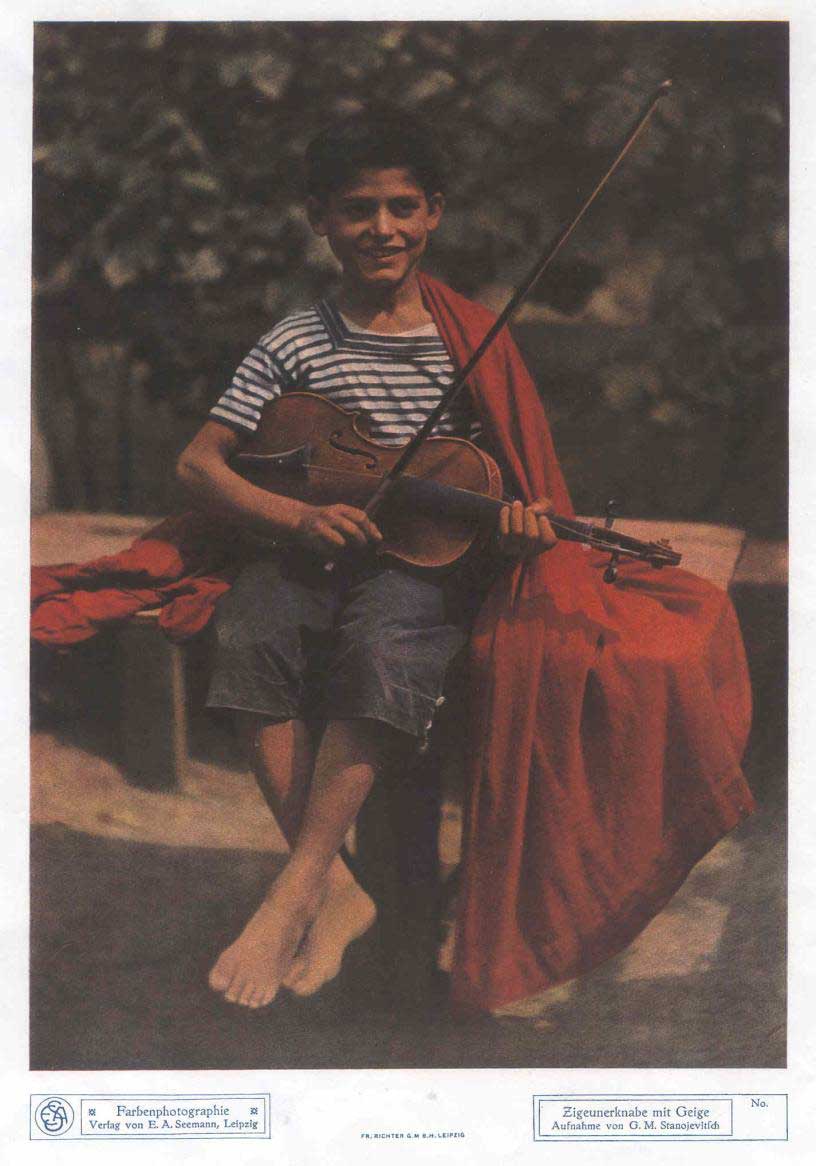
Djordje Stanojević had been into photography for a long time and he had been actively following the innovations in the field when he made the first colour photograph called A Boy with the Violin [2]. This photograph is famous for being the oldest colour photograph in print in the history of Serbian photography. The technique that was used was autochrome. Four diapositives were made in four colours (black, red, blue and yellow) and then, the glass plates were joined and the colours mixed. The photograph was printed in Leipzig and its two copies are now in Stanojevic’s legacy in the Historical Museum of Serbia. It is a reproduction whose format is 18 x 24 cm, mounted on cardboard whose format is 30 x 40 cm. One passe-partout is black, the other one is white. Its got labels which contain the title of the photograph, name of the author, publisher and printing house. Some 500 glass plates that Djordje Stanojevic used in his work are now located in the Historical Museum of Serbia.
As regards Stanojevic’s photographic creations, one should also mention that he was the first Serbian author who wrote the book about the first photograph that was created with X-rays.
Even today, we are still not aware how admired and honoured this great scientist and photographer was and how respected he was among the top European authors of photography. In 1891, Stanojevic was elected a member of the working presidency of the Congress for General Photography. These are just some of the authors who attended and chaired this event: Joseph Maes, Pierre Jules Janssen, Sir William Abney, Hermann Wilhelm Vogel, Alexander de Blochouse, Gustave de Vylder and Maurice Bucquet. It is hard to imagine there was a more prominent group of authors in the 19th century European photography and Djordje Stanojevic, our scientist and amateur photographer, was one of them.
- U svom testamentu Đorđe Stanojević je pominjao i drugu knjigu ove fotomonografije: „Kod Graphisče Union u Beču 7 Neubangane nalazi se dovršena druga sveska moje Srbije u slikama za koju je znatan deo isplaćen firmi. Sa 2.000 dinara koja mi je suma data od Velimirijanuma za izdavanje te sveske, da se izda ta sveska.“ Međutim sudbina ove sveske nije poznata.
- Many authors call this photograph Gipsy Boy with the Violin.
- Đ. Stanojević, Le bombardement de l'Université de Belgrade, Paris: M. Vermont, 1915.
- Đ. Stanojević, Srbija u slikama I, Štamparija Pavlovića i Stojanovića, Beograd 1902.
- S. Roslavcev, L. Bečejac, „Prof . Đorđe Stanojević, pionir elektrifikacije u Srbiji“, Elektroprivreda Srbije, MST Gajić, Beograd, 2004, 11–20.
- Zbornik radova naučnog skupa Đorđe Stanojević – život i delo, Povodom 150 godina od rođenja, Novi Sad, 10-11. oktobra 2008, Srpska akademija nauka i umetnosti, Ogranak u Novom Sadu, Novi Sad, 2008 , 179–243.
